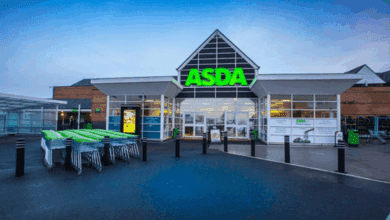How to put the consumer first in modern digitally disrupted retail space

Register to get 1 free article
Reveal the article below by registering for our email newsletter.
Want unlimited access? View Plans
Already have an account? Sign in
The retail industry has changed drastically over the last 12 months. The failure of retail brands like Toys R’ Us and BHS are just the most recent reminders that digital disruption continues to take its toll on the unprepared.
The way we are shopping has changed, as have our expectations of customer experience and marketing. Smartphones, the subscription economy, the data explosion and the new media landscape are all behind the transformation.
The new people power
Consumers are now hyper-connected to each other and to brands. Digital innovation has given consumers unprecedented levels of flexibility and has redefined expectations of retailers.
And power has shifted from shopkeepers to customers. We can delete, unsubscribe, ignore, scroll past, and uninstall with a tap or an Alexa command. Consumers are now more entitled than ever. They want instant gratification, recognition, speed, control and results. They are irritated when the Uber driver they’re tracking lags behind the app’s estimate of the car’s position. They fume when a free movie takes more than a few seconds to load on their phone. They roll their eyes when they have to print out a return receipt.
Thanks to data protection standards such as GDPR, customers are increasingly aware of the value of their personal data, both to brands delivering personalised experiences and to bad actors seeking illicit gain. While consumers don’t like the risks of sharing personal data, they also demand personalised and relevant content and product recommendations at every touch point. So, it’s no surprise that according to a report by Accenture, over 75% of consumers are more likely to purchase from a retailer who knows their name, purchase history and recommends on-taste products.
A number of technologies are emerging to cater to the entitled consumer:
Location-based marketing
Retailers are increasingly personalising website content based on location – reflected in dynamic advertising, offers, and in-store-pick up at customers’ closest store location. Geo-optimising retail locations is money well spent since more than 30% of all searches are already based on location (Google). On a microlevel, the combination of location tracking and geofencing via beacons and automated push notifications provides a powerful recipe for delivering personalised offers in real time.
The shift to digital channels creates massive amounts of customer data, but retailers need help transforming it into actionable intelligence. Powerful AI engines connect customer data – including past behaviour, purchase history, and demographics – with retail inventories and business rules, creating relevant, individually tailored customer offers. Distributed via omnichannel solutions, these offers bring one-to-one personalisation into emails, websites, and push messages.
Voice technology
The rise of voice assistants such as Google Home and Amazon Echo is powering the growth of voice-based interactions. Customers can use online shopping services with their hands and eyes free while walking, cooking or riding their bikes – so the future of retail may also mark the end of consumers’ addiction to small screens.
Experts at Gartner already predict that by 2020, 30% of web browsing sessions will no longer happen on screens at all. In the US, Dunkin Donuts already lets customers order coffee and donuts via voice commands, then pick their nearest DD location, and have their cherry-glazed donuts and drinks waiting for them.
Augmented reality (AR)
Customers have playfully explored the real world enhanced by layers of digital information in the popular Pokémon GO game. Now shopping is emerging as the main driver for “serious” AR applications, and AR apps from furniture and automotive retailers are just the beginning.
According to ComScore19, more than 100 million consumers will be conducting their shopping with the assistance of AR technology by 2020. Combined with AI, customer data, and location-based marketing, AR apps will display current promotions and product details for items the consumer is seeking in real time.
The future of retail is personal
No matter which channel consumers use to make their purchase, winning retailers will adopt a consumer-first marketing approach that engages each consumer as an individual.
Leveraging data to deliver a contextual understanding of desires and preferences is critical.
This imperative goes far beyond knowing who your customer is and where she is located. The aim is to continuously build out a rounded profile of your customer. The approach can include tracking behavioural data, transactional data, data from social media and much more.
The key is to create and offer content that is not just relevant and valuable for potential customers – but also triggers feedback.
Using feedback combined with other data sets, retailers can learn more about their customers, recognise strong signals of intent and begin delivering contextually relevant content at the right moments.
The retail store of the future may feature real products and services by real people – or not. Perhaps customers will be served by tablet-equipped store assistants or interact with holographic AI-projections via next-gen data glasses on their path to purchase. And maybe purchases are not even the end goal. Perhaps consumers will simply visit stores to snap a pretty Instagram post, try on an item or two, have a drink or a snack, and order their products online later from the comfort of their home. But one thing is already for certain: making sure that today’s entitled consumers will also be your customers tomorrow requires a relationship based on mutual trust and understanding.
By Nick Worth, board member, Selligent Marketing Cloud







